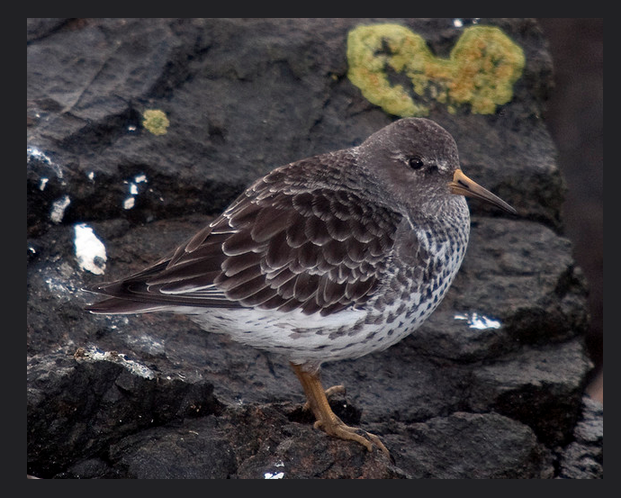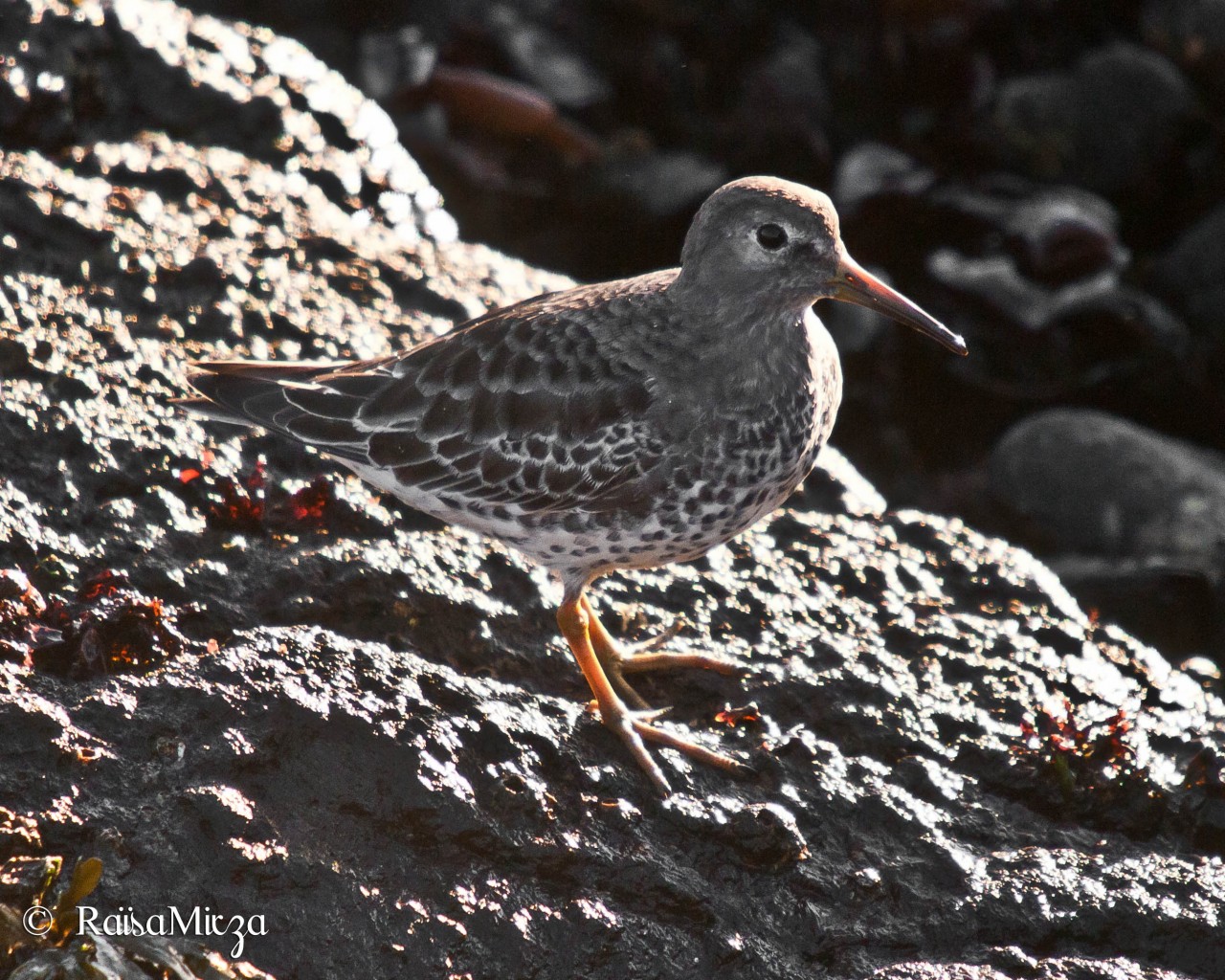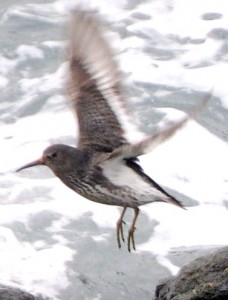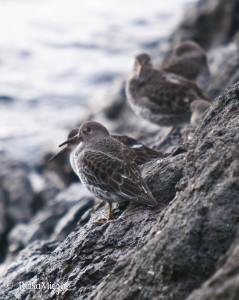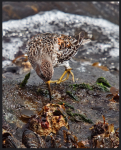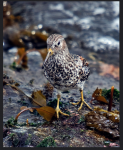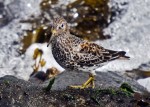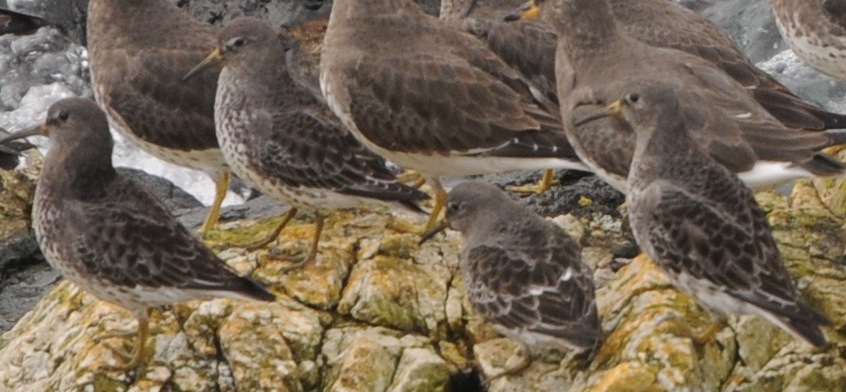
Inset from the photo below showing the rock sandpipers in the foreground. The larger birds are the surfbirds. Several Black Turnstones are also in the image below.
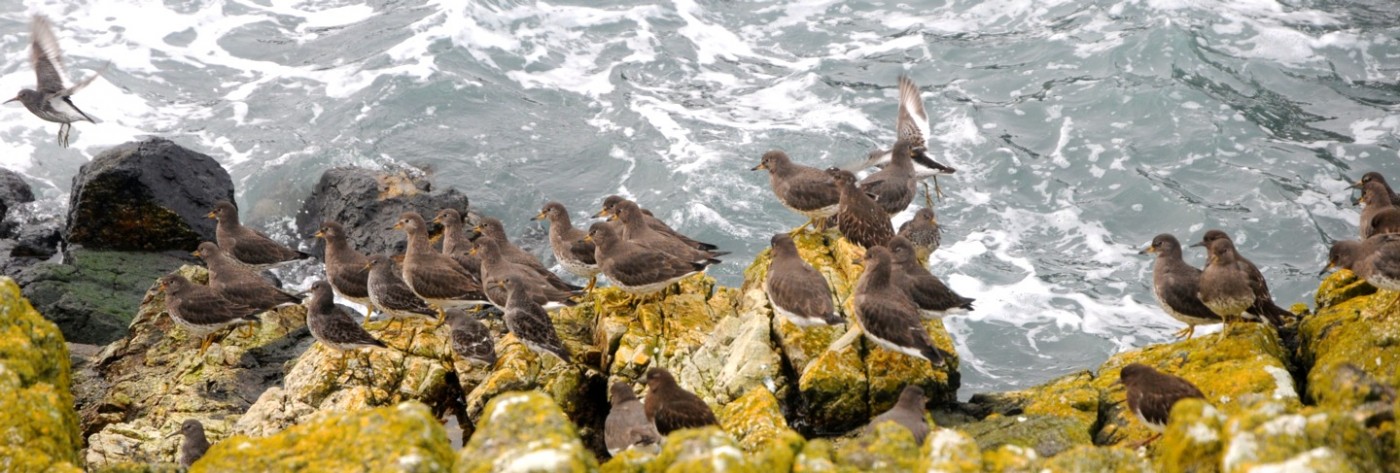
Click to enlarge to see the difference between the rock sandpipers and the surfbirds. There is also a black turnstone lower right: Photo by Ryan Murphy
Habitat
During the breeding season, rock sandpipers nest on the dry, barren tundra. The rest of the year, they are found on the rocky shores such as at Race Rocks
Behavior and feeding:
Rock Sandpipers are usually found singly, in small groups, or as can be seen above, in flocks with black turnstones and surfbirds. Unlike the other birds in the photo, rock sandpipers do not get prey attached to the rock, They move regularly pick up moving prey from the crevices and seaweed among the rocks. Rock Sandpipers are unusual in that they eat vegetable matter, including algae, or seeds as well as invertebrates.
Classification:
| Domain | Eukarya |
| Kingdom | Animalia |
| Phylum | Chordata |
| Subphylum | Vertebrata |
| Class | Aves |
| Order | Charadriiformes |
| Family | Scolopacidae |
| Genus | Calidris |
| Species | ptilocnemis |
| Common Name: | Rock Sandpiper |
- Rock Sandpiper Summer Breeding Plumage
- Photos by Ryan Murphy
- Summer Breeding Plumage
| This file is provided as part of a collaborative effort by the students, faculty, staff and volunteers of Lester B. Pearson College | February. 2009 | Garry Fletcher |

